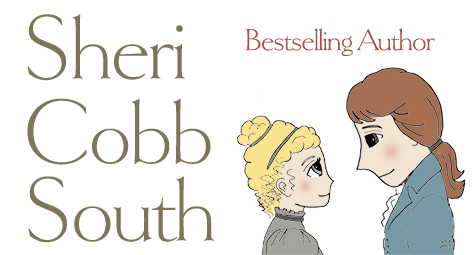In spring of 2016, I had the good fortune to be featured on USA Today’s HEA blog in an article on historical mystery series with strong romantic elements! Since there were eight authors referenced in the article, everyone’s interview had to be abbreviated due to space constraints. I’ve included my entire interview below; if you’d like to read the HEA blog entry (I’ve been told it was one of the most popular they’ve ever done, and was shared more than 1,400 times!), you can read it here
1) Did you plan from the start to include the romantic element in your book or series, or did it evolve in the writing of the stories? If the former, why? If the latter, at what point did you realize this element would be significant to the book/series?
Yes, the romance was a big part of the series from the very beginning. I’d had success with “across the tracks” romance in my self-published Regency romance The Weaver Takes a Wife, so when I got ready to develop a mystery series, I decided to go back to that particular well, in this case pairing a young and inexperienced (in more ways than one) Bow Street Runner with the widowed viscountess who is his chief suspect in the murder of her husband (Book 1, In Milady’s Chamber). I knew from the first that I was asking readers to suspend a great deal of disbelief in accepting that a Bow Street Runner, even a young and handsome one, might become romantically involved with an aristocratic lady. In fact, I felt this scenario was well-suited for a series, as it would allow for the gradual development of a relationship that might be difficult to pull off in a single title.
2) Does the romantic element develop over several books or is it strong from the start?
It seems a bit sacrilegious to mention my own books in the same sentence as Dorothy L. Sayers, but at the risk of sounding presumptuous, the relationship between Lord Peter Wimsey and Harriet Vane was my model, as far as developing the romance goes. In the first book, the attraction is all on John Pickett’s side. Julia, Lady Fieldhurst is far more concerned with saving her neck from the gallows, but even aside from that, a woman of her class would never think of a man of his station in those terms. It was interesting to see reviewers’ response to this one-sided attachment. One reviewer said, “If you’re looking for a romance, you won’t find it here,” while another said, “The romantic tension crackles, because absolutely nothing happens”!
3) What is the relationship between the protagonist and the significant other, and the role of the significant other in the story? (Are they partner sleuths, or is the “other”, while involved in the story, not one of the primary investigators? If you are writing a series, does your protagonist have only one significant other, or are there a series of them?)
In the first book, he was investigating her husband’s murder, and she was the primary suspect. In the later books, they keep running into each other—sometimes coincidentally, other times not. Because of her social position, she can go places that he can’t, and ferret out information from people who might refuse to talk to him. The most recent book, Dinner Most Deadly, found them at cross purposes for the first time, with Julia reluctantly agreeing to protect her best friend’s estranged husband, who is a suspect in the case Pickett is investigating. And it makes her miserable, which goes a long way toward making her realize just how important he has become in her life.
4) If you are writing/have written a series, how is the romantic element maintained after the couple marry or otherwise have a meeting of the minds on their relationship?
I don’t want to give away too much detail here, because the book that resolves the relationship has not yet been published. Suffice it to say that I’d expected the series to end once that resolution came, but after writing that book, I realized that the daily challenges of making such an unequal match work offered plenty of opportunity for conflict—and comedy—that deserved to be explored.
5) Do you think the romantic element is important to the marketing of your books? Is it featured, by either you or your publisher, in the marketing materials? If not, do you know why?
I think it’s very important—in fact, I doubt if there’s a single person who reads my books strictly for the mystery! While my publisher markets the John Pickett series as part of its mystery line, I write my own copy for the cover flap, and I make sure to mention the issues within the developing relationship as well as the mystery. I also promote it on romance review websites, and next month I’ll be attending the Romantic Times conference for the first time.
6) There are historical romances with strong suspense of mystery plots. How are those different from the books that you write?
The most obvious difference is the fact that my series follows the same couple over a number of books—and that, four books into the series, the romance is still unresolved and unconsummated. I also think my books contain more humor than the historical romances with mystery or suspense elements, which seem to deal with darker themes and/or tortured characters. I don’t do tortured characters; John Pickett is rather like a Regency “Chuck” (from the titular character of the TV series, portrayed by Zachary Levi) in that he’s brilliant but utterly lacking in self-confidence.


